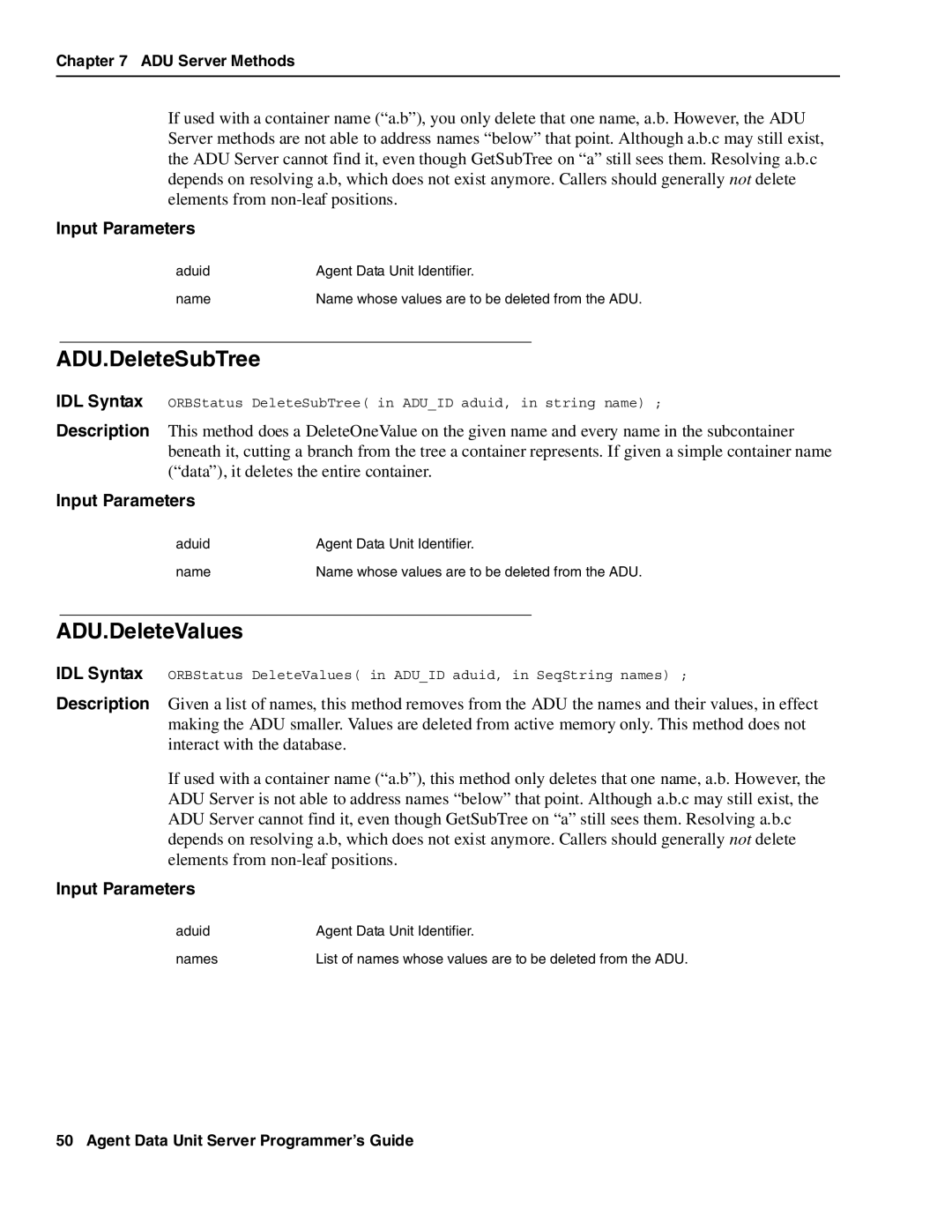
Chapter 7 ADU Server Methods
If used with a container name (“a.b”), you only delete that one name, a.b. However, the ADU Server methods are not able to address names “below” that point. Although a.b.c may still exist, the ADU Server cannot find it, even though GetSubTree on “a” still sees them. Resolving a.b.c depends on resolving a.b, which does not exist anymore. Callers should generally not delete elements from
Input Parameters
aduid | Agent Data Unit Identifier. |
name | Name whose values are to be deleted from the ADU. |
ADU.DeleteSubTree
IDL Syntax ORBStatus DeleteSubTree( in ADU_ID aduid, in string name) ;
Description This method does a DeleteOneValue on the given name and every name in the subcontainer beneath it, cutting a branch from the tree a container represents. If given a simple container name (“data”), it deletes the entire container.
Input Parameters
aduid | Agent Data Unit Identifier. |
name | Name whose values are to be deleted from the ADU. |
ADU.DeleteValues
IDL Syntax ORBStatus DeleteValues( in ADU_ID aduid, in SeqString names) ;
Description Given a list of names, this method removes from the ADU the names and their values, in effect making the ADU smaller. Values are deleted from active memory only. This method does not interact with the database.
If used with a container name (“a.b”), this method only deletes that one name, a.b. However, the ADU Server is not able to address names “below” that point. Although a.b.c may still exist, the ADU Server cannot find it, even though GetSubTree on “a” still sees them. Resolving a.b.c depends on resolving a.b, which does not exist anymore. Callers should generally not delete elements from
Input Parameters
aduid | Agent Data Unit Identifier. |
names | List of names whose values are to be deleted from the ADU. |
